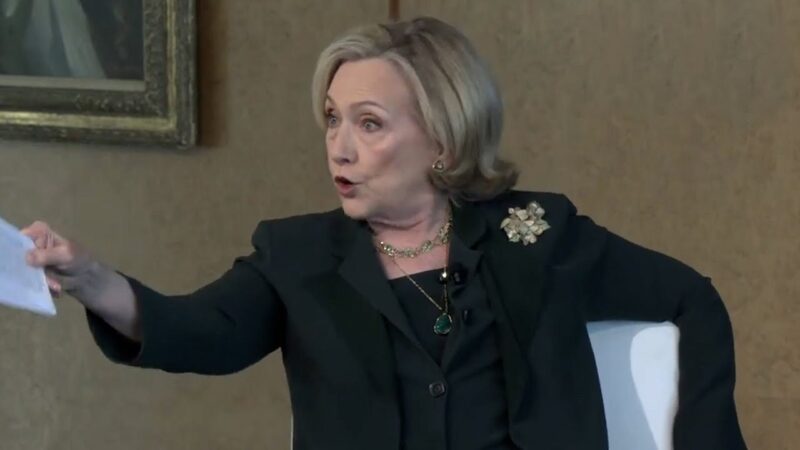Columbia Students Humiliate Hillary Clinton in Middle of Lecture
Columbia University, known for its prestigious academic reputation, recently found itself at the center of controversy as a group of approximately 30 students staged a walkout during a lecture given by former Secretary of State Hillary Clinton. The protest was in response to the school’s alleged involvement in publicly sharing the names and photos of students who had participated in pro-Hamas protests. This incident has sparked a heated debate about student safety, privacy, and the university’s response to doxxing.
The lecture, which aimed to address the role of women in the peace process, featured not only Hillary Clinton but also Dr. Keren Yarhi-Milo, the dean of Columbia’s School of International and Public Affairs. Prior to the walkout, approximately 300 students were in attendance. However, as the lecture progressed, about 30 students decided to pack up their belongings and leave in an organized protest against the university.
The students gathered near the lobby of the International Affairs Building, where the lecture was held, to draw attention to the alleged doxxing incident. They accused the university of allowing their names and photos to be displayed on the side of a truck, along with the words “Columbia’s Leading Antisemites.” The students claimed that these photos had been pulled from a platform that was supposed to be private and secure, and they criticized the university for not taking action to prevent the doxxing.
The students who participated in the walkout put forth several demands to the university’s administrators. They called for a promise to ensure student safety and immediate legal support for those affected by the doxxing incident. The protesters believed that the university had a responsibility to protect its students and take action against such violations of privacy.
The students whose names and photos appeared on the truck were members of campus groups that had signed off on a letter holding Israel responsible for terrorist attacks carried out by Hamas. The attacks, which occurred on October 7, resulted in the deaths of 1,400 Israelis, many of whom were civilians. This context adds another layer to the motivations behind the walkout and the tensions surrounding the issue.
During the lecture, Hillary Clinton also addressed the calls for an immediate ceasefire, primarily from the Left. She expressed her belief that calling for a ceasefire at that moment would only benefit Hamas. According to Clinton, such a ceasefire would provide Hamas with an opportunity to rebuild its armaments and fortify its positions against future attacks by the Israelis.
“People who are calling for a ceasefire now do not understand Hamas, that is not possible. It would be such a gift to Hamas because they would spend whatever time there was a ceasefire in effect rebuilding their armaments, creating stronger positions to be able to fend off an eventual assault by the Israelis.” – Hillary Clinton
Hillary Clinton explains why calling for ceasefire is misguided:
"People who are calling for a ceasefire now do not understand Hamas, that is not possible. It would be such a gift to Hamas because they would spend whatever time there was a ceasefire in effect rebuilding their… pic.twitter.com/3hBfk71KtI
— Aviva Klompas (@AvivaKlompas) October 30, 2023
Just one day prior to the walkout, Columbia University’s president announced that the university, in partnership with Barnard College, would establish a joint Doxing Resource Group. The purpose of this group is to combat future incidents of doxxing and provide support to affected students.

The walkout at Columbia University raises important questions about privacy, safety, and freedom of expression on college campuses. Students have a right to express their opinions and engage in peaceful protests without fear of their personal information being exposed to the public. The doxxing incident highlights the potential risks faced by individuals who participate in contentious political activities, as well as the responsibilities of universities in safeguarding their students.

